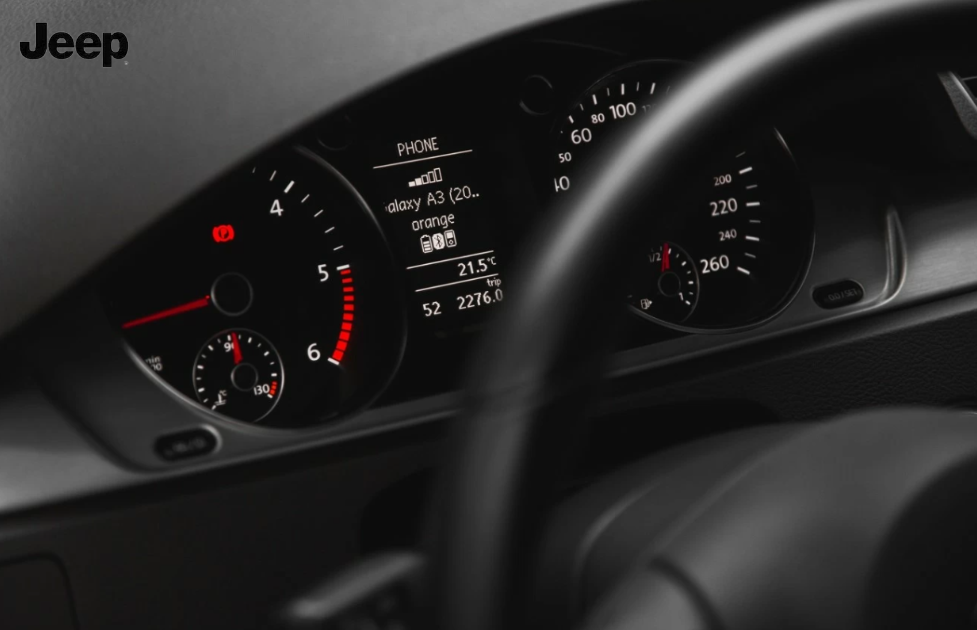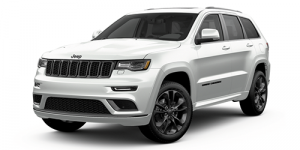Contents
There’s nothing more annoying than starting your engine only to see your Jeep vehicles dashboard lit up with warning lights — especially if you don’t have your user manual handy to help you translate what all of those flashing symbols mean!
The best thing to do is memorize all those warnings, especially if you’re going to be out on the trails.
But if you’re like me (someone who can barely remember their own phone number, let alone what all the idiot lights on my dashboard mean), here’s how to make sense of what your Jeep is trying to tell you.
Your guide to what Jeep warning lights mean and what to do if your Jeep check engine light is flashing.

Onboard Diagnostics Explained
Jeep warning lights (often called idiot lights) are the only tool your car has to talk to you under normal circumstances.
Starting in the 1980s, automotive manufacturers began installing diagnostics systems that could analyze everything happening under the hood of the vehicle using dozens of sensors installed throughout the engine.
These onboard diagnostics (OBD) work by collecting data from those sensors and sending the information back to the electronic control unit — which is your car’s brain.
If the sensor detects something is amiss, either with the engine or the sensor itself, it sends a diagnostic trouble code (DTC) back to the engine control unit — which, in turn, triggers the associated warning light.
Most suv cars have more than a dozen warning lights scattered across their dashes with different meanings.
What do you need to understand your Jeep’s warning lights?
That depends on how old your vehicle is. For cars built before the 1980s…
There are no onboard diagnostics — so if you see an idiot light, it’s usually labeled “trouble” or “engine.” This means there is a problem with the engine that will result in a breakdown. It won’t give you any more detailed information, but it could indicate anything from low oil pressure to an overheating engine or issues with the charging system.
For Jeeps built between the mid-1980s and 1996…
You’re dealing with the earliest incarnation of the OBD systems (sometimes called OBD-1 to differentiate it from its more modern counterparts). If the check engine light comes on, all that you need to check the Jeep error codes (or DTC) is your key and a note pad:
- Put the key into the ignition, then turn it on-off-on-off-on — don’t start the engine, merely turn it to the on mode. If you do it quickly enough (within 5 seconds), the check engine light will begin blinking.
- Each DTC consists of 2 digits, which will display in the flashes. So, if you’ve got a code 11 — which means there’s a problem with the cam or crank positioning sensors — the light will flash once, pause, then flash once again.
- OBD-1 codes on Jeeps range from 11 to 77. Once you’ve figured out what numbers you have, refer to the Internet or this list to help you figure out what your Jeep warning lights are telling you.
For cars built from 1996 onward…
You’ll need a specialized tool to check the OBD II codes. OBD 2 languages are 5 characters long, starting with a letter and ending with 4 or 3 numbers and another letter. There are also hundreds of them — far too many to translate with flashes.
An OBD-II Scanner / OBD 2 Reader is the easiest way to find check engine light codes
You can purchase an OBD II scanner for between $50 to $100 for a basic model, which is necessary for most cars. Here’s how to use an OBD 2 scanner:
- Plug in the scanner into the OBD connector.
- Turn your key to “ON” or “ACC” (depending on the scanner model) and read the codes.
- You can both read and delete the numbers as necessary with an ODB 2 scan tool.
- The ODB connector must be located within 3 feet of the driver and must not require any tools to be revealed. Look under the dash and behind ashtrays.
For some Jeeps (especially those with digital odometers)
All you need is your key! Depending on your vehicle’s model, you can turn the key to the ON position, then turn it off/on again 3 times, ending with ON. If you did it right, your odometer will show 6 dashes real quickly and then display the diagnostic code(s) — the word “DONE” will appear after the final code is displayed. If this doesn’t work, then you’ll need to use an OBD II scanner to pull the codes.
Conclusion:
There you have it: a quick and easy guide to the most common Jeep warning lights. Whether your check engine light is on or flashing, the important thing is to never ignore the light. There are plenty of things that can go wrong with your Jeep; figuring out exactly what those problems are can be a harrowing process.
Hopefully your Jeep check engine light is not a sign of a serious problem! The most important thing to do if your Jeep check engine light is flashing is to determine exactly what the cause is. Taking your Jeep in for service can be really helpful, although you might want to consult with a professional first.
Here’s some things to watch out for when your Jeep Check Engine Light comes on, so you know what might be going wrong. Every engine light doesn’t necessarily mean something serious, but depending on how long your Jeep check engine light has been on, it could signal a bigger problem that needs repair — like a major sensor failure or wiring issue. If you want to know more about Jeep vehicles such as Jeep Gladiator, Compass or any other model then always contact Jeep Nepal.











0 Comments